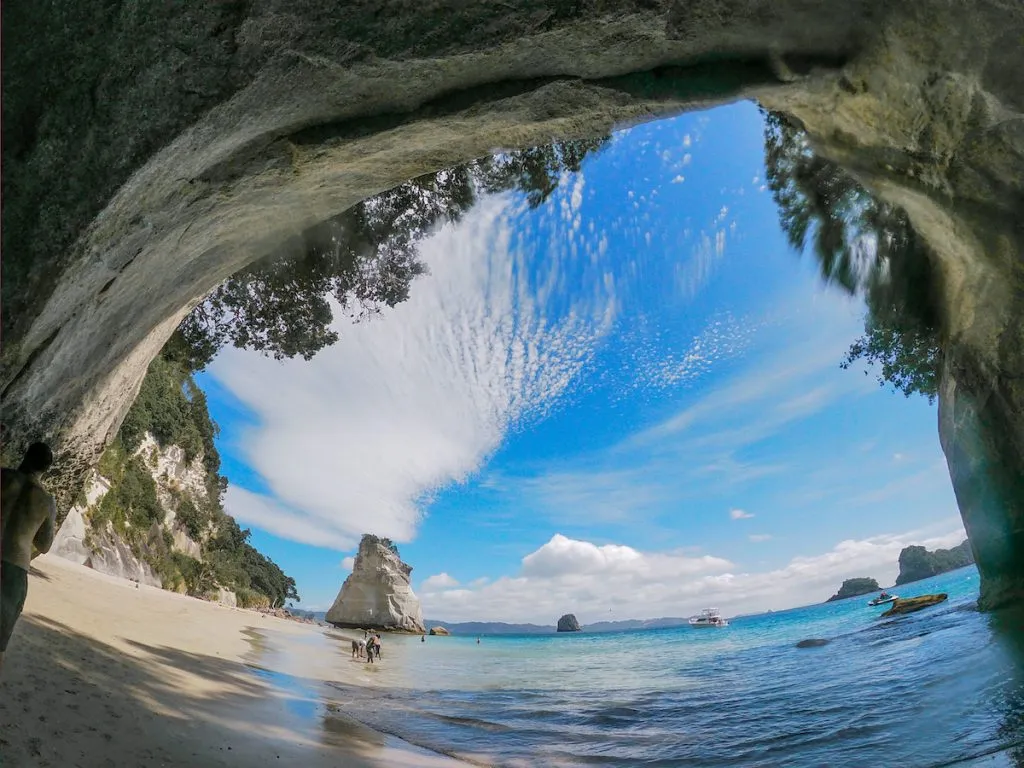
For many travelers, New Zealand brings to mind rolling green hills, dramatic coastlines, and an exhilarating Maori culture, which ensures the North Island of New Zealand is indeed unique. north island new zealand While South Island gets fame for its dramatic mountain ranges, the North Island offers quite a different experience filled with cultural depth, geothermal wonders, vibrant cities, and infinite natural beauty.
From the cosmopolitan energy of Auckland and Wellington to the raw geothermal forces in Rotorua and the tranquil beaches of the Bay of Islands, the North Island of New Zealand is disseminated with experiences and marvels. It is just this very essence of the North Island that makes for an incredible guide of such gems and findings. It explores the attractions, culture, history, hidden sites, and travel tips given here, so that a visitor can take home a lot from a highly detailed but very easy-to-follow introduction to these places.
Geography and Overview of North Island New Zealand
The North Island New Zealand stretches about 1,100 kilometers from north to south and is home to nearly three-quarters of the country’s population. With Auckland as the largest city and Wellington as the political capital, the island balances modern urban living with rich natural landscapes.
Unlike the South Island, which is dominated by towering mountain ranges, the North Island is characterized by rolling farmland, active volcanoes, geothermal fields, lush forests, and endless coastlines. Its climate is warmer overall, making it attractive year-round for travelers seeking outdoor adventures and cultural exploration.
A Brief History of North Island New Zealand
Understanding the North Island New Zealand requires a look into its fascinating history.
- Maori Settlement: The Maori people arrived in Aotearoa (New Zealand) from Polynesia around the 13th century. Their culture, traditions, and stories remain central to the North Island’s identity.
- European Arrival: In the 18th century, European explorers like Captain James Cook made contact, leading to colonization. The signing of the Treaty of Waitangi in 1840, in the Bay of Islands, cemented the relationship between Maori chiefs and the British Crown.
- Modern Era: Today, the North Island reflects a blend of Maori traditions and European influences, creating a vibrant multicultural society.
This cultural richness is one of the defining features that makes the North Island New Zealand stand out from many other destinations.
Major Cities in North Island New Zealand
1. Auckland – The City of Sails
Auckland is the largest city in North Island New Zealand and the country’s main international gateway. Known as the “City of Sails” for its harbors filled with yachts, Auckland offers a mix of modern skyscrapers, cultural attractions, and stunning waterfronts.
Key highlights:
- Sky Tower with panoramic views.
- Auckland War Memorial Museum with rich Maori artifacts.
- Waiheke Island, famous for vineyards and beaches.
- Viaduct Harbour for dining and nightlife.
2. Wellington – The Capital of Creativity
At the southern tip of the North Island New Zealand, Wellington serves as the nation’s capital and cultural hub. Known for its vibrant arts scene, coffee culture, and political institutions, it’s a must-visit.
Key highlights:
- Te Papa Tongarewa (National Museum of New Zealand).
- Cable car and Botanic Gardens.
- Cuba Street’s creative vibe.
- Mount Victoria Lookout for city views.
3. Hamilton – Gateway to the Waikato
Hamilton lies along the Waikato River and is known for its lush gardens and proximity to Hobbiton Movie Set, a major tourist draw.
4. Tauranga – Coastal Charm
Located in the Bay of Plenty, Tauranga offers beautiful beaches and a relaxed lifestyle, with Mount Maunganui being its crown jewel.
Natural Wonders of North Island New Zealand
Rotorua – Geothermal Heartland
Rotorua is perhaps the most famous destination in North Island New Zealand for its geothermal landscapes and Maori culture.
- Bubbling mud pools and geysers at Te Puia.
- Maori cultural performances and hangi feasts.
- Relaxing hot springs and spas.
Tongariro National Park – Dual World Heritage Site
Home to active volcanoes, alpine deserts, and emerald lakes, Tongariro is one of the oldest national parks in the world. The Tongariro Alpine Crossing is often considered the best one-day hike in New Zealand.
Bay of Islands – Nautical Paradise
Northland’s Bay of Islands features 144 subtropical islands. It’s a haven for sailing, dolphin watching, and exploring the historic Waitangi Treaty Grounds.
Coromandel Peninsula – Pristine Beaches
Known for Cathedral Cove and Hot Water Beach, the Coromandel is perfect for those seeking coastal beauty and natural relaxation.
Maori Culture in North Island New Zealand

Experiencing Maori traditions is essential when visiting the North Island New Zealand.
- Attend a cultural performance in Rotorua.
- Visit a marae (meeting ground) with a guided tour.
- Learn about Maori legends at Te Papa Museum.
- Participate in a hangi, a traditional earth-cooked feast.
Respect for Maori culture not only enhances your travel experience but also supports local communities and preserves traditions.
Adventure and Outdoor Activities
The North Island New Zealand is an outdoor playground with something for every adventurer:
- Surfing in Raglan.
- Kayaking around the Bay of Islands.
- Hiking the Tongariro Alpine Crossing.
- Caving adventures in Waitomo Glowworm Caves.
- Skiing on Mount Ruapehu in winter.
Food and Wine Experiences
New Zealand cuisine combines fresh, local produce with international influences. On the North Island New Zealand, foodies can enjoy:
- Fresh seafood in coastal towns.
- World-class wines in Hawke’s Bay and Waiheke Island.
- Maori-inspired dishes like hangi.
- Vibrant farmer’s markets in Wellington and Auckland.
Hidden Gems of North Island New Zealand
Beyond the popular tourist spots, the North Island New Zealand offers secret treasures:
- Cape Reinga, where the Tasman Sea meets the Pacific Ocean.
- Taranaki with its symmetrical Mount Taranaki volcano.
- Gisborne, the first city in the world to see the sunrise.
- Forgotten World Highway, a scenic and remote driving route.
Travel Tips for Exploring North Island New Zealand
- Best Time to Visit: Summer (December–February) for beaches, winter (June–August) for skiing.
- Getting Around: Renting a car or campervan is the best way to explore at your own pace.
- Budgeting: New Zealand can be expensive, but hostels, camping, and local eateries help manage costs.
- Respect Nature: Follow the “Tiaki Promise” to protect the land, culture, and wildlife.
Why Visit North Island New Zealand?
The North Island New Zealand is a destination that balances modern cities with natural wonders, rich Maori traditions with European influences, and adventure with relaxation. Whether you’re exploring geothermal pools, sipping wine on a vineyard, or hiking through volcanic landscapes, the North Island delivers a travel experience like no other.
It’s not just about sightseeing—it’s about connecting with the land, people, and stories that make the island one of the world’s most enchanting places.
Conclusion
For travelers seeking a journey that blends culture, adventure, history, and natural beauty, the North Island New Zealand is a perfect choice. With its friendly locals, diverse landscapes, and deep cultural roots, it offers something for everyone. From Auckland’s energy to Wellington’s creativity, Rotorua’s geothermal wonders, and Northland’s beaches, every corner of the North Island invites exploration.



